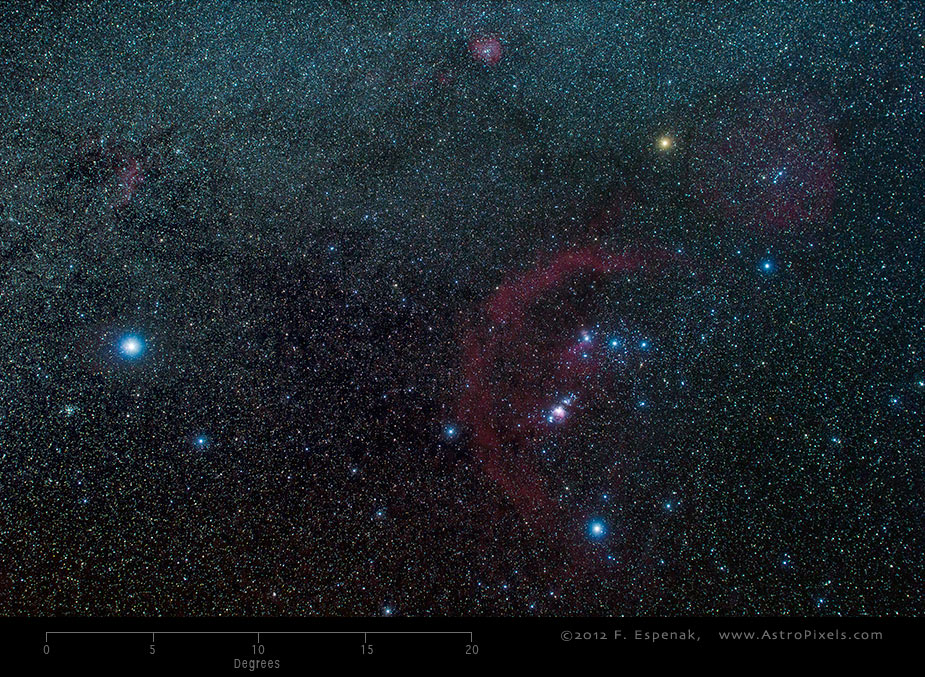Orion & Canis Major
Orion the Hunter and Canis Major the Great Dog dominate the night sky during January and February. They are two of the 48 Greek constellations originally described by the 2nd century astronomer Claudius Ptolemy (Wikipedia), and they remain today among the 88 modern constellations defined by the International Astronomical Union (Wikipedia).
Orion (abbrev. = Ori; genitive = Orionis) covers 594 square degrees or 1.44% of the celestial sphere making it the 26th largest constellation. It contains 204 stars brighter than apparent magnitude 6.5, the brightest star being Rigel (Alpha Orionis). The three bright stars making up the Belt of Orion point eastward towards Siris in Canis Major.
Canis Major (abbrev. = CMa; genitive = Canis Majoris) covers 380 square degrees or 0.92% of the celestial sphere making it the 43rd largest constellation. It contains 147 stars brighter than apparent magnitude 6.5, the brightest star being Sirius (Alpha Majoris).
Visit the Orion Star Chart and Canis Major Star Chart for figures illustrating these constellations including the identification of their brighter stars. The Winter Constellations Gallery offers close-up portraits of some of the brighter constellations of the season.
Technical Details
- Object: Orion & Canis Major
- Date/Time: 2012 Feb 21 at 03:04 UTC
- Location: Bifrost Astronomical Observatory, Portal, AZ
- Mount: Losmandy G-11 German Equatorial Mount
- Lens: Nikkor AI 28mm f/2
- Camera: Canon EOS 550D (Rebel T2i)
- Field of View: 43.4° x 29.8° at 30.1 arc-sec/pixel (web version: 169 arc-sec/pixel)
- Exposure: 2 x 360s, f/4, ISO 800 and 120s, f/2.8, ISO 800 with Cokin A830 Diffusion Filter
- File Name: OriCMa-01w.jpg
- Processing (Adobe Camera Raw): Color Balance, Vignetting, Noise Reduction
- Processing (Photoshop CS5): Curves, Layers
- Original Image Size: 3454 × 5179 pixels (17.9 MP); 11.5" x 17.3" @ 300 dpi
- Rights: Copyright 2012 by Fred Espenak. All Rights Reserved. See: Image Licensing.
